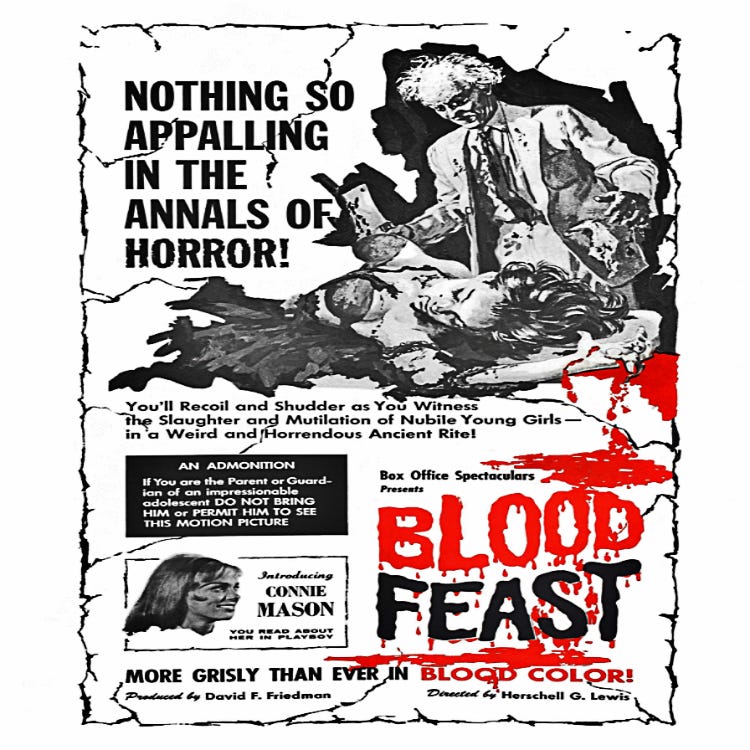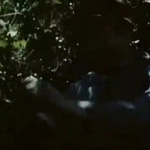If cinema history were a family reunion, Blood Feast would be that wild-eyed uncle who shows up with a cooler full of questionable meat and insists on performing ancient rituals in the backyard. Helmed by Herschell Gordon Lewis, affectionately crowned the “Godfather of Gore,” Blood Feast is widely recognised as the first actual “splatter” film. This genre-defining work gleefully throws buckets of fake blood at the screen and, occasionally, at the audience’s dignity.
The story, such as it is, follows Fuad Ramses, a Miami caterer with a unique take on farm-to-table cuisine; he butchers local women to cook up a “blood feast” for the goddess Ishtar. The police, played by actors who seem to be reading their lines from cue cards just out of frame, bumble through the investigation with all the urgency of a Sunday stroll. The plot is less a narrative and more a series of loosely connected excuses for Ramses to fondle, hack, and yank various body parts, often with the subtlety of a sledgehammer in a crystal shop.
If you’ve ever wondered what it would look like if a department store mannequin tried to emote, look no further than Connie Mason’s performance as Suzette Fremont. Her delivery is so flat, you’ll check your TV’s volume settings for signs of life. Mal Arnold’s Ramses, meanwhile, oscillates between bug-eyed intensity and the overacting usually reserved for children’s Halloween pageants. The supporting cast fares no better, with dialogue that feels like it was written by someone who had only recently learned English from a cereal box.
The film’s budget was a paltry $24,500, and every penny is visible, mainly in red paint masquerading as blood and a gold-sprayed mannequin standing in for the goddess Ishtar. The special effects are legendary for their ineptitude; a sheep’s tongue (procured from a Tampa butcher and left unrefrigerated for maximum olfactory impact) stands in for a human tongue in one infamous scene. At the same time, limbs are hacked off with all the realism of a child’s arts and crafts project.
Despite or perhaps because of its many failings, Blood Feast is a riotous experience. The film is packed with unintentional laughs, from the police detectives’ cluelessness to Ramses’ wild-eyed monologues; every scene teeters on the edge of parody. The tongue-pulling sequence, in particular, plays like slapstick, with the victim offering little more than a confused “Ngaahhh!” as her tongue is yanked out.
Blood Feast is often compared to the works of Ed Wood, and for good reason. Both directors share a talent for transforming incompetence into campy charm. Lewis’s fearless commitment to gore and his utter disregard for narrative coherence make the film a foundational text for horror fans and bad movie aficionados alike. Its influence can be seen in everything from Friday the 13th (1980) to The Texas Chainsaw Massacre (1974), and it remains a rite of passage for anyone seeking the origins of cinematic carnage.
To watch Blood Feast is to witness the birth of a genre and the death of subtlety. It’s a film that’s so bad, it circles back around to being entertaining, a genuine “so bad it’s good” classic. Whether you’re a horror historian, a lover of cinematic cheese, or just in the mood to laugh at something profoundly inept, Blood Feast delivers a full course of gore, giggles, and glorious trash.













Share this post